Here, you find my whole video series about Algebra in the correct order and I also help you with some text around the videos. If you want to test your knowledge, please use the quizzes, and consult the PDF version of the video if needed. In the case you have any questions about the topic, you can contact me or use the community discussion in Mattermost and ask anything. Now, without further ado, let’s start:
Part 1 - Introduction
Algebra is a video series I started for everyone who is interested in the basics of algebra as a mathematical field. It generalises a lot of ideas from my Start Learning Mathematics series and puts them into a more abstract setting. This is not only interesting from a pure mathematical point of view but we also find a lot of applications for these concepts. The power of describing them all under a single definition is what makes algebra so useful for a lot of different parts in mathematics.

With this you now know the topics that we will discuss in this series. Some important bullet points are groups, rings, fields and vector spaces. In order to describe these things, we need to generalise a lot from the constructions of number sets. Let’s immediately start with most basic structure.
Part 2 - Semigroups
In this video, we start with our first algebraic object, which is a binary operation. For this, we only need a set and inside we can combine two chosen elements. After this, we can make it more specific and define so-called semi-groups. They act as a preview to the more powerful object group, we will discuss later.
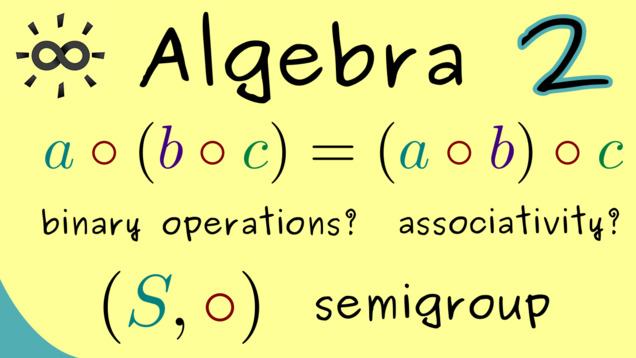
Part 3 - Identities and Inverses
After learning what a semigroup is, we can start to disguish special elements in it. The first one is a so-called neutral element.
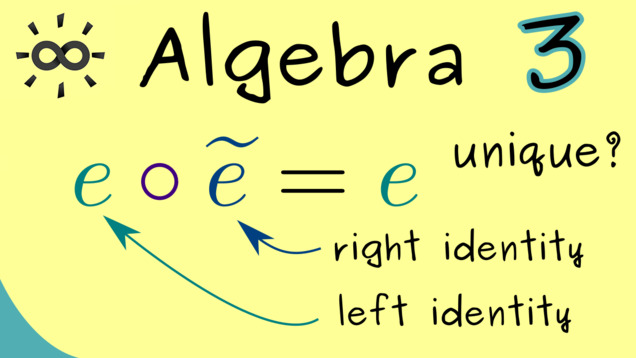
Part 4 - Groups
Now we start with the definition of a group. We already know that they should contain an identity and inverses. However, it turns out that one can reduce the requirements without losing these properties. We present the nice and short proofs, which also show some standard calculation techniques in groups.

Content of the video:
00:00 Introduction
00:55 Semigroup with inverses
01:42 First definition of a group
03:16 Second definition of a group
05:00 Proof for equivalence of definitions
10:10 Credits
Part 5 - Examples for Groups
Let’s look at some examples for groups. However, before we do that we should prove that inverses are uniquely given if they exist. With this, we are also able to consider a very general example of a group that is constructed from a semigroup.

Part 6 - Cancellation Property
Since we have all the inverses in a group, it’s really easy to solve equations in a group: one just have to multiply with the inverses. This simple procedure is usually known as the cancellation property of the group. We will show that if we have this property in a semigroup, then this semigroup is actually a group.
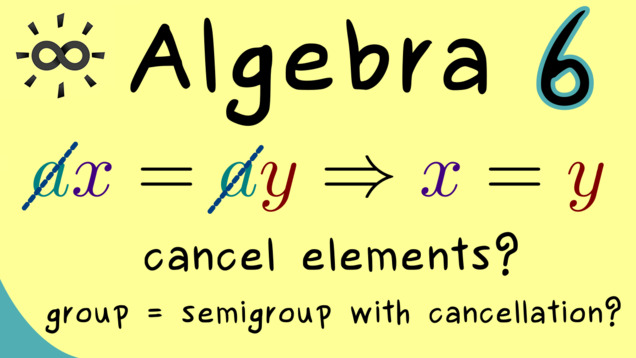
Part 7 - Abelian Groups
In a lot of examples of group, which we have discussed, the binary operation satisfies an additional property: commutativity. In general, this is not the case such that these groups get a special treatment and are called abelian groups. Let’s look at more examples and also at non-abelian groups like the symmetric group $ S_3 $.
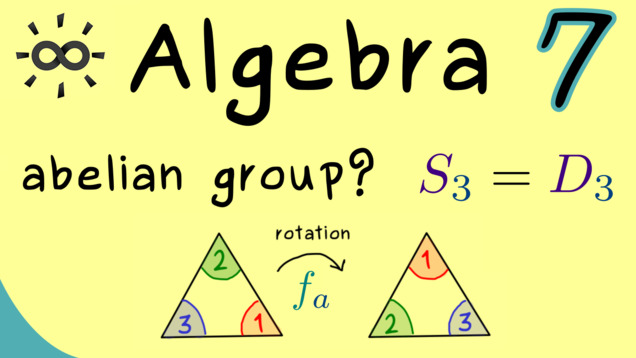
Part 8 - Integers Modulo m ⤳ Abelian Group
In this video, we will just discuss an important example, namely the modulo calculation in the integers. With this, we can define an abelian group, usually denoted by $ \mathbb{Z}/m \mathbb{Z} $.
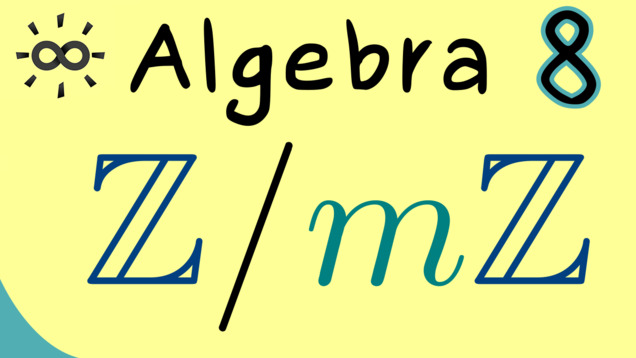
Part 9 - Group Homomorphisms
In Linear Algebra, the structure-preserving maps are given by linear maps. A similar thing we have in group theory and we call them group homomorphisms. It turns out that single equation already fixes all the properties we need for that: $ \varphi(a \circ b) = \varphi(a) \ast \varphi(b) $.
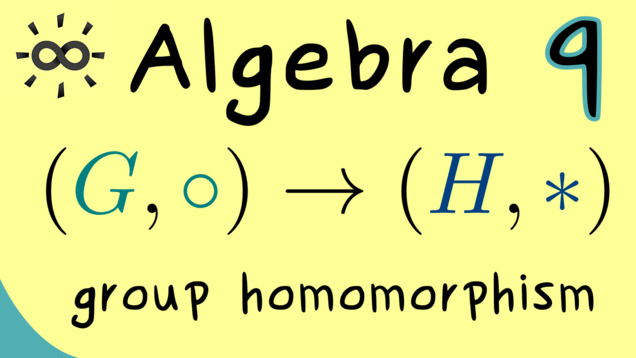
Part 10 - Subgroups
By having large groups, it’s also possible to find subsets in this group that form groups by itself. The example that comes in mind is $(\mathbb{Z}, +)$ which is embedded in the larger group $(\mathbb{R}, +)$. Now, we will see how we can formulate this in general and which properties a subset has to fulfill such that is a well-defined subgroup.
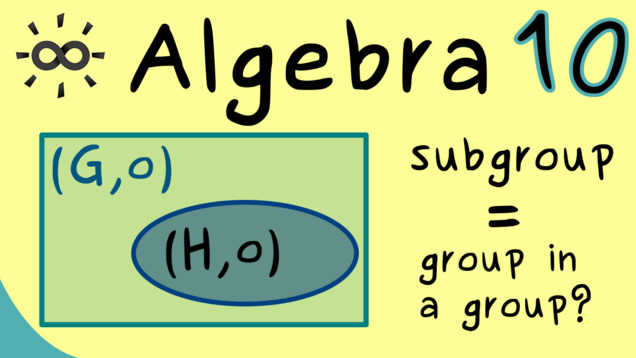
Part 11 - Klein Four-Group
In this video, we will prove a statement for subgroups which holds for groups of finite order. We apply this result to a nice example, called the Klein Four-Group.
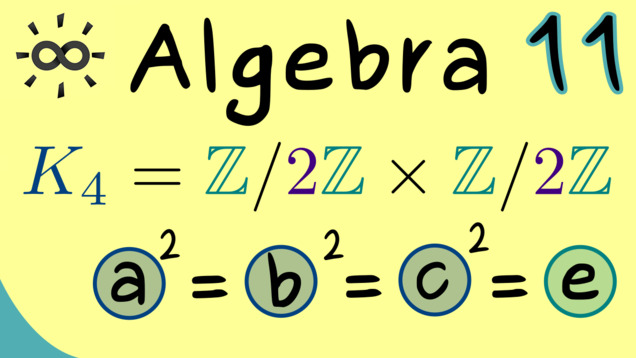
Part 12 - Subgroups under Homomorphisms
Let’s go back to group homomorphisms. We already know that they conserve the group properties and, therefore, we should be able to show that they also conserve subgroups. Indeed, images and preimages of subgroups under homomorphisms are subgroups as well.
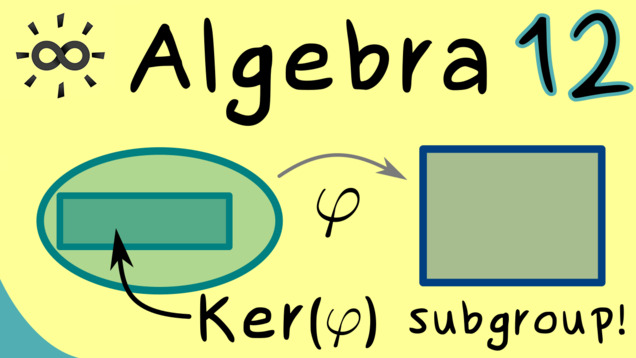
Part 13 - Conjugate Subgroups
We can use the fact that images of subgroups under homomorphisms are subgroups again. Hence, if we consider a homomorphism from a given group $G$ to itself, a so-called endomorphism, then we can use a subgroup to find other subgroups. It turns out that inner automorphisms, which are endomorphisms and isomorphisms at the same time, can define an equivalence relation on the set of all subgroups of $G$.

Part 14 - Cyclic Groups
We will discuss how we can generate subgroups from a given set of elements. Some subgroups and groups can be generated by just one element, which makes them quite easy to study. They are usually called cyclic groups.

Part 15 - Examples of Cyclic Groups
We already know that cyclic groups are not so complicated because such a group can be generated by a single element. This makes a cyclic group immediately into an abelian group. Let’s see if we can write down some examples.

Summary of the course Algebra
- You can download the whole PDF here and the whole dark PDF.
- You can download the whole printable PDF here.
- Test your knowledge in a full quiz.
- Ask your questions in the community forum about Algebra.
Ad-free version available:
Click to watch the series on Vimeo.